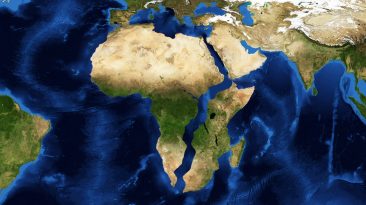All of the systems, beliefs, emotions, and experiences that we call life are taking place on a tiny rock floating through space. During our time here, we’ve discovered that our rock is one of the only ones that has all the conditions necessary for sustaining life. Certainly the only one we’ve found.
What we can’t figure out for sure is what spark brought together all the conditions that led us into existence. What clues have we found so far?
And why does it seem like life on Earth came from something extraterrestrial? The earliest signs of life on Earth are molecules that are so complex that some scientists say that it’s unlikely they could’ve just popped up here.
So what if they formed somewhere else in space first, and then traveled to our planet? How would they get here?
And how could that process change our understanding of life in the Universe? No one knows for sure how or where life on Earth started, but there are plenty of conflicting scientific theories out there.
To better understand them, let’s start with something that we can all agree on. Earth is about 4.5 billion years old, and some of the earliest fossils we’ve found are about 3.7 billion years old; so we know that life started at some point in between, and that’s where things start to get complicated.
Some of the earliest evidence for life on Earth contains a complex molecule called Ribonucleic acid, or RNA. RNA is made up of thousands of smaller molecules that are connected in a particular pattern, and it was one of the driving forces behind life on Earth.
[dx_custom_adunit desktop_id=”RTK_CDE4″ mobile_id=”RTK_SUFd”]But the big question that divides the scientific community is: where did RNA come from? Well, one option is that it came from outer space; and no, we don’t mean by way of advanced aliens planting their seeds, although that would make for an interesting video…
Anyways, what we’re talking about is called Panspermia: the idea that living organisms or genetic materials could’ve been transported to Earth through some sort of natural phenomenon, like an asteroid.
It might sound crazy, but it’s actually plausible. In 2012, Danish scientists found the building blocks of RNA in a star system 400 light years away, proving that the compounds necessary to forge life on Earth could be created in space.
But then how did they end up on Earth? Well, there are two main theories, and both involve asteroids. Number one: an asteroid could’ve brought these genetic materials to Earth by crashing into its surface.
Or number two: an asteroid could’ve crashed into Mars, hit a spot that contained microorganisms, and sent the debris into space, which eventually found its way to Earth. Both of these instances have happened before, and research shows that some lifeforms like bacteria and fungus could definitely survive the trip to our planet.
But some scientists remain skeptical; choosing to believe that life on Earth was sparked by natural phenomena like lightning or good old-fashioned chemical reactions.
So even if Panspermia doesn’t turn out to be our true origin story, it doesn’t mean that asteroids aren’t spreading life to any of the other billions of planets out there right now, laying the ground work for future civilizations like ours.
Subscribe to What-If on Youtube or follow the show on Facebook Watch.
Sources
- “How Did Life Arise On Earth?”. Than, Ker, 2016. Live Science. Accessed December 19 2018.
- “7 Theories On The Origin Of Life”. Choi Q, Charles, 2016. Live Science. Accessed December 19 2018.
- “Octopuses Didn’t Come From Space, But Did Something Else?”. Thompson, Avery, 2018. Popular Mechanics. Accessed December 19 2018.
- “Did Life On Earth Come From Outer Space?”. 2017. Motherboard. Accessed December 19 2018.
- “The Secret Of How Life On Earth Began”. Marshall, Michael, 2016. bbc.com. Accessed December 19 2018.
- “What Makes Earth So Perfect For Life?”. Choi Q, Charles, 2012. Live Science. Accessed December 19 2018.
- “Researchers May Have Solved Origin-Of-Life Conundrum”. Service F. Robert, 2015. Science | AAAS. Accessed December 19 2018.



























